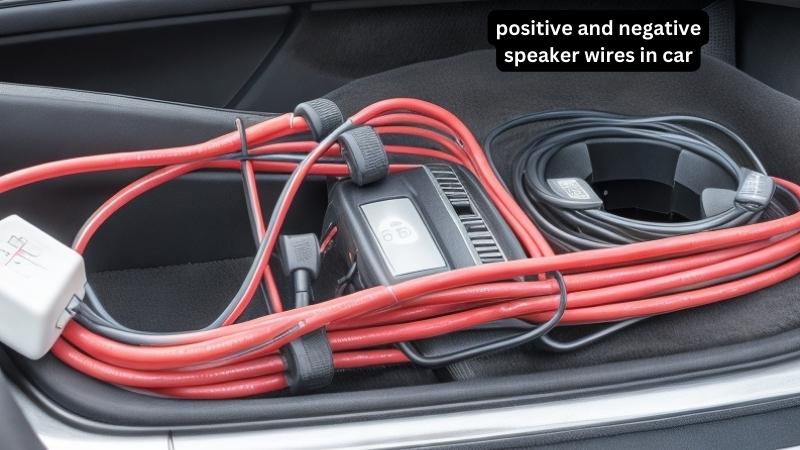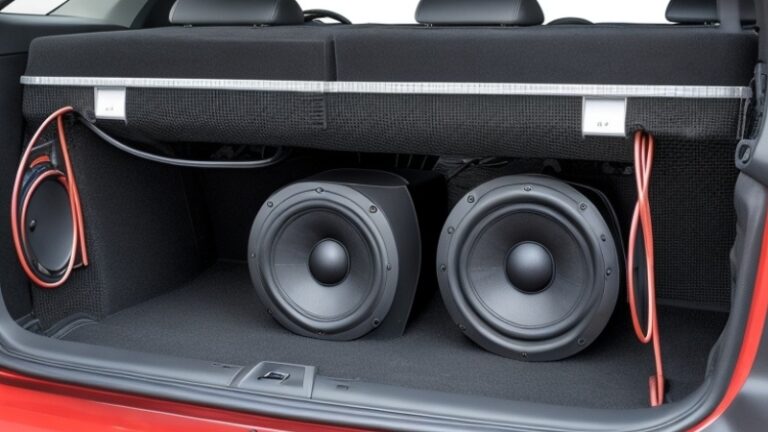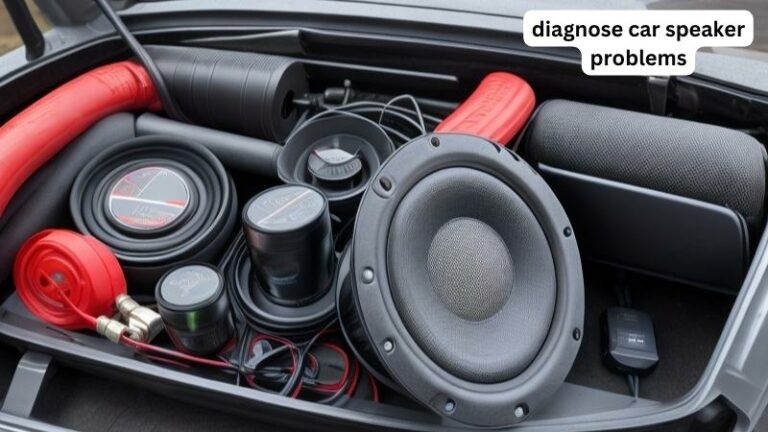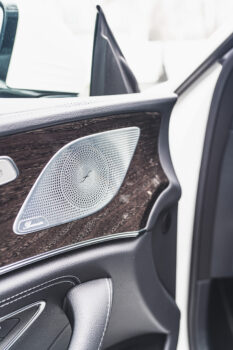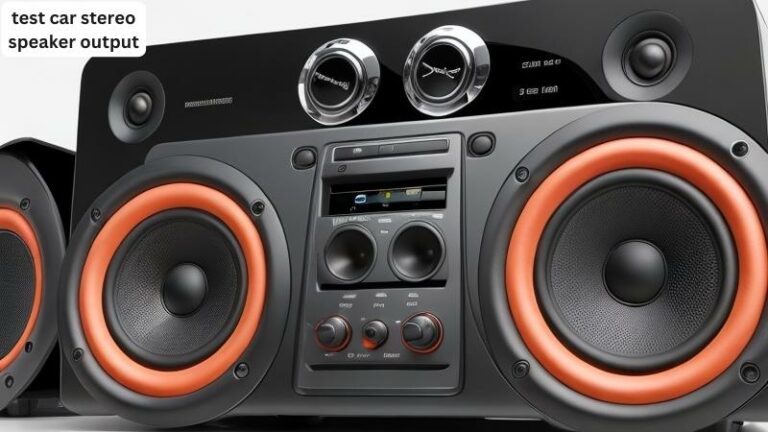how to identify positive and negative speaker wires in car?
Today we discuss positive and negative speaker wires in car. When it comes to car audio installations or upgrading your car’s sound system, correctly identifying the positive and negative speaker wires is crucial. Mixing up the polarity can result in poor audio quality, phase cancellation, and a less-than-optimal listening experience. In this article, we will guide you through the process of identifying positive and negative speaker wires in your car, ensuring you get the best possible sound.
Understanding Speaker Wires:
Prior to delving into the techniques for distinguishing between positive and negative speaker wires, it would be advantageous to gain a brief understanding of the nature of speaker wires.
Speaker wires are electrical pathways that facilitate the transmission of audio signals from the sound source, like a car stereo, to the speakers.
Usually, they encompass two conductors; one carries the positive signal, while the other carries the negative signal. The correct maintenance of polarity is vital to ensure the optimal performance of speakers and the accurate reproduction of sound.
Importance of Identifying Positive and Negative Speaker Wires:
Identifying the positive and negative speaker wires correctly is crucial for a few reasons. Firstly, it ensures that the speakers are in phase, meaning they move in and out together, producing clear and accurate sound.
Secondly, reversing the polarity can cause phase cancellation, where certain frequencies cancel each other out, resulting in diminished sound quality.
Lastly, some car audio systems, especially those with advanced features like time alignment, require proper speaker wire polarity for optimal performance.
Methods to Identify Positive and Negative Speaker Wires:
Here are five methods to help you identify positive and negative speaker wires in your car:
1. Wire Color Coding:
Identifying the polarity of the speaker wire is an important task and often the color coding method is used for this purpose. It has been observed that most speaker wire manufacturers follow a standard color scheme to code positive and negative wires.
Usually, wires with colors like white, red, or solid are tagged as positive while black, green, or striped patterned wires are considered negative.
However, it’s important to remember that color coding may not be consistent across different car models and manufacturers. Therefore, it is recommended to cross-check with other methods to be sure about the polarity of the speaker wire.
2. Polarity Markings:
Some speaker wires come with polarity markings. These markings indicate which wire is positive and which is negative. Positive markings can include “+” signs, red indicators, or other symbols, while negative markings may include “-“, black indicators, or corresponding symbols. Check the wires near the speakers or connectors for any such markings to determine the correct polarity.
3. Speaker Terminal Design:
Examining the speaker terminals can also help identify the positive and negative wires. Many speakers have terminals labeled with “+” and “-” signs or corresponding colors.
Match the wires to the respective terminals to ensure correct polarity. However, be cautious as not all speakers have markings, especially in older or aftermarket systems.
4. Using a Multimeter:
A multimeter can be a handy tool for identifying speaker wire polarity. Set the multimeter to the resistance (ohms) setting and touch the probes to the wire ends.
If the multimeter reading shows a positive value, it means the probes are connected to the positive and negative wires correctly.
If the reading shows a negative value or no reading at all, switch the probes to the opposite wire ends to achieve the correct polarity.
5. Trial and Error Method:
If you’re unable to determine the polarity using the above methods, you can resort to the trial-and-error method. Connect one wire to the positive terminal of a speaker and the other wire to the negative terminal. Play some audio and listen carefully.
If the sound is clear and well-balanced, you have the correct polarity. If the sound is distorted or unbalanced, reverse the wires and listen again until you achieve optimal audio quality.
Common Mistakes to Avoid:
While identifying speaker wire polarity, it’s important to avoid some common mistakes:
- Not double-checking: Always verify the polarity using multiple methods to ensure accuracy.
- Cutting both wires simultaneously: Cutting one wire at a time prevents confusion during the identification process.
- Failing to label the wires: Once you’ve identified the correct polarity, label the wires or use markers to avoid confusion during installation or future maintenance.
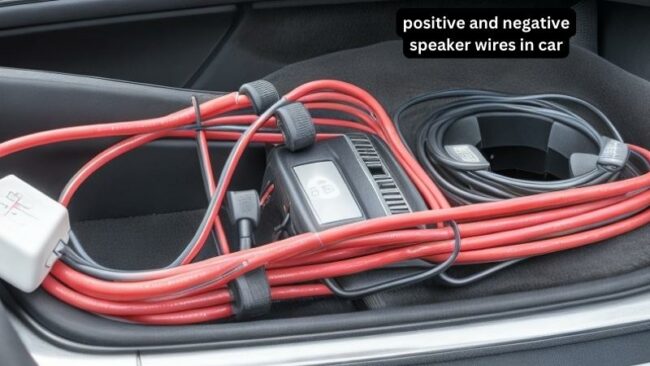
Faqs for positive and negative speaker wires in car:
Yes, the methods discussed in this article can be applied to both factory-installed and aftermarket car audio systems. However, keep in mind that some aftermarket systems may have non-standard wire color coding or different speaker terminal designs, so it’s essential to consult the system’s manual or documentation if available.
Connecting the speaker wires with reversed polarity can result in phase cancellation, where certain frequencies cancel each other out, leading to diminished sound quality. It’s important to ensure the correct polarity to achieve accurate and balanced audio reproduction.
While wire color coding can be helpful, it’s not always foolproof, as colors can vary between different car models and manufacturers. It’s best to verify using additional methods, such as polarity markings, speaker terminal design, a multimeter, or the trial and error method.
If your car speakers do not have polarity markings or color-coded wires, you can use other methods like examining the speaker terminal design, utilizing a multimeter or employing the trial and error method to determine the correct polarity.
Absolutely! If you’re uncertain or uncomfortable with identifying speaker wire polarity yourself, consulting a professional car audio installer can ensure accurate polarity and optimal sound performance. They have the expertise and tools to handle such tasks effectively.
Conclusion:
Properly identifying positive and negative speaker wires in your car is vital for optimal audio performance. Whether you rely on wire color coding, polarity markings, speaker terminal design, a multimeter, or the trial and error method, take your time and double-check to ensure accurate polarity. By paying attention to this detail, you can enjoy high-quality sound reproduction and make the most of your car’s audio system.
